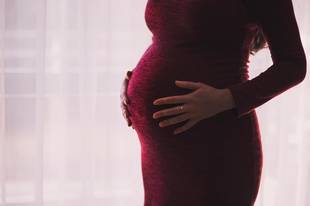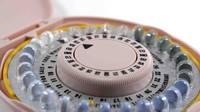
Natural Family Planning, also called fertility awareness, refers to methods for planning and preventing pregnancies by observation of the naturally occurring signs and symptoms of the fertile and infertile phases of the menstrual cycle. Intercourse is avoided during the fertile phases of the menstrual cycle. Intercourse is avoided during the fertile phase if pregnancy is not desired. The natural methods rely on timing rather than artificial aids or surgery.
The eight techniques of NFP are:
i. The Rhythm (or Calendar) Method
The rhythm method is also known as the safe period. It is a fertility tracking method using a calendar. The woman must observe and record her reproductive cycle (i.e., ovulation and menstruation). Ovulation occurs about 12 to 16 days before menstruation (which is end of your ovulation period or 14 days before the next period is due.) An egg has a natural life of two days in the womb waiting to be fertilized. A sperm can last for four or five days. Therefore, if there is no sex for six days prior to the release of an egg and three days afterwards, viable sperm and egg are unlikely to meet. If a woman’s periods are very regularly, it is fairly easy to work out on which days the safe period falls. Its effectiveness is 87% for couples with normal fertility, who follow and use the method perfectly.
ii. Cervical Mucus Method
It is an NFP method relying on a woman’s familiarity with her body and its processes. The vaginal discharge after a woman’s period is used as indicators of fertility. It is also known as the Biling’s method, named after an Australian doctor who discovered it.
Observe that the vaginal discharge which appears after menstruation will first be cloudy and sticky. Then it will become thinner, clearer, slippery, watery and runny (about the consistency of raw egg white). This is the period when you are ovulating and therefore highly likely to become pregnant. After a few days, the discharge will become thicker and drier again. It’s important to examine – look and touch – this discharge at the same time everyday. Its effectiveness is 97% but only for couples with normal fertility who follow and use the method perfectly.
iii. Basal Body Temperature (BBT)
This NFP method involves the daily recording of the temperature changes in the woman’s body with a special thermometer. She records her temperature at the same time everyday before getting up for doing anything in the morning. A rise in the BBT of about half a degree Celsius may mean ovulation, and the couple should abstain from intercourse if pregnancy is not desired. Effectiveness is more or less 95% but only for couples with normal fertility who follow and use the method perfectly.
iv. Sympto-thermal Method
This is a combination of the BBT and the cervical mucus methods and other physiological indicators of ovulation, such as tenderness of the breast and mid-cycle pain. This involves recording. If pregnancy is not desired, couples should abstain from intercourse until the 3rd day of elevated temperature or the fourth day after the peak day of mucus, whichever comes first. Its effectiveness is 98%, but only for couples with normal fertility, who follow and use the method perfectly.
v. Withdrawal or Coitus Interrupts
During sex, the man withdraws his penis from the woman’s vagina just before the sperm-containing fluid ejaculates. However, this method is not very reliable. It is difficult to predict the exact timing of ejaculation and some sperm may be released before the full ejaculation. Even before the ejaculation, the man releases “pre-ejaculatory fluid” which already contains enough sperm to get a woman pregnant. It may also lead to frustration for one or both partners. Its effectiveness is more or less 30% to 40%.
vi. Prolonge Lactation of Lactational Amenorrhea (LAM)
This is considered a natural contraceptive and is known to protect a woman from pregnancy for the first six months after giving birth, depending on certain factors.
Breastfeeding is the main factor for delaying menstruation (lactational amenorrhea). As the baby sucks, the nipples are stimulated, causing the woman’s body to produce prolactin, the hormone that induces milk flow.
Prolactin is also believed to suppress ovulation on the nursing mother, in addition to its main function of increasing the supply of breast milk; thus, the more frequent and the longer the breast feeding, the longer the delay of menstrual period.
Breastfeeding provides 98% protection against another pregnancy only as long as:
- The baby is under six months old
- The mother is fully breastfeeding, a minimum of six feedings during the daytime and two at night, and completes emptying of the breast during every feeding episode.
- The mother is amenorrheic or has not experienced menstrual bleeding 56 days after delivery.
Breastfeeding also provides many other benefits. It is the best nutrition of infants. It lowers the incidence of infant diseases and death because of the presence of colostrum, a yellowish fluid in the mother’s milk known to be an antibody. Breastfeeding also promotes bonding between the mother and the child.
vii. The Douche
This NFP method involves the washing out of the sperm and semen deposited inside the woman’s vagina, with the medicated solution immediately after sexual intercourse. This is not a very reliable method as the sperms may have entered the cervix or the mouth of the uterus even before the douche is applied.
viii. Abstinence
This NFP method is that ancient but worthy method and the means of choice by the most conservative. However, one would be crazy to believe that the injunction to “just don’t do it” is enough.
Abstinence is the avoidance of any sexual activity that could cause pregnancy. This includes intercourse and other sexual activities in which semen may come in contact with the vulva (external female genitals) or vagina. This is the only 100% foolproof method of preventing pregnancy according to Body Talk: The XYZ Guide to Young Women’s Health and Body Vol. 2. Women’s Media Circle Foundation. It is completely effective in preventing pregnancy as well as STDs, and it poses no health risk.


















